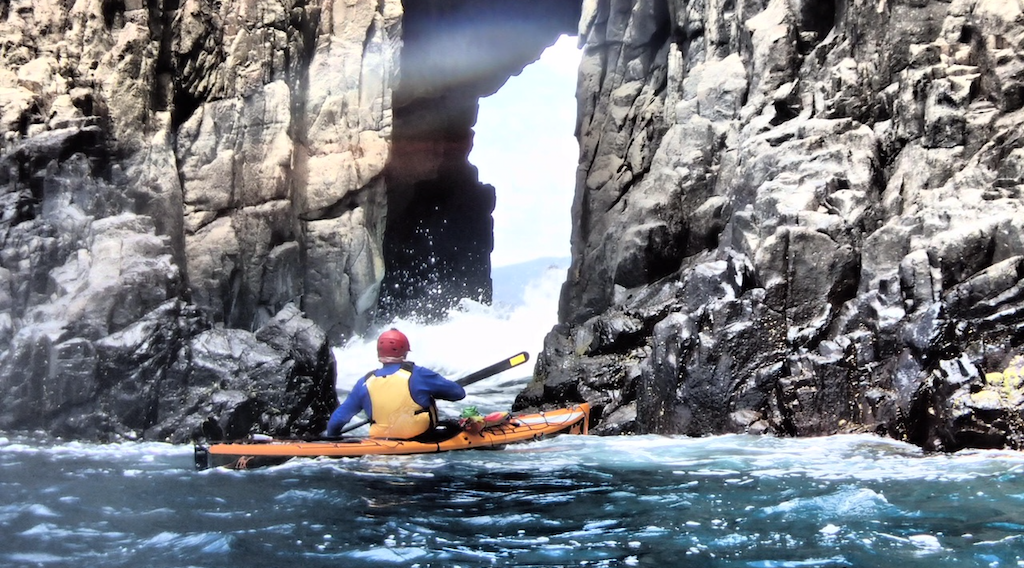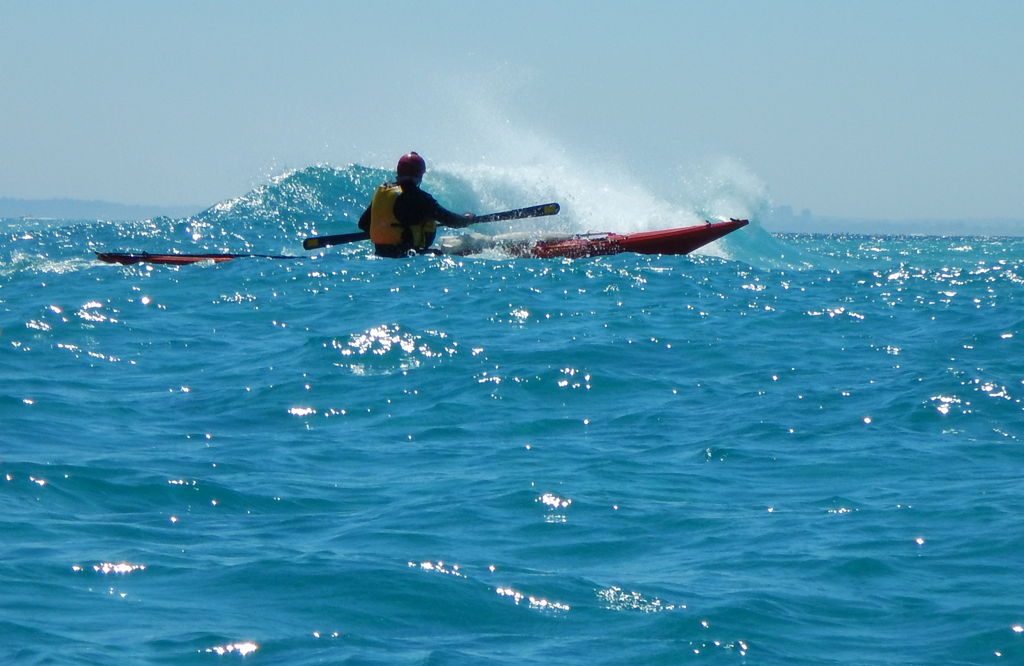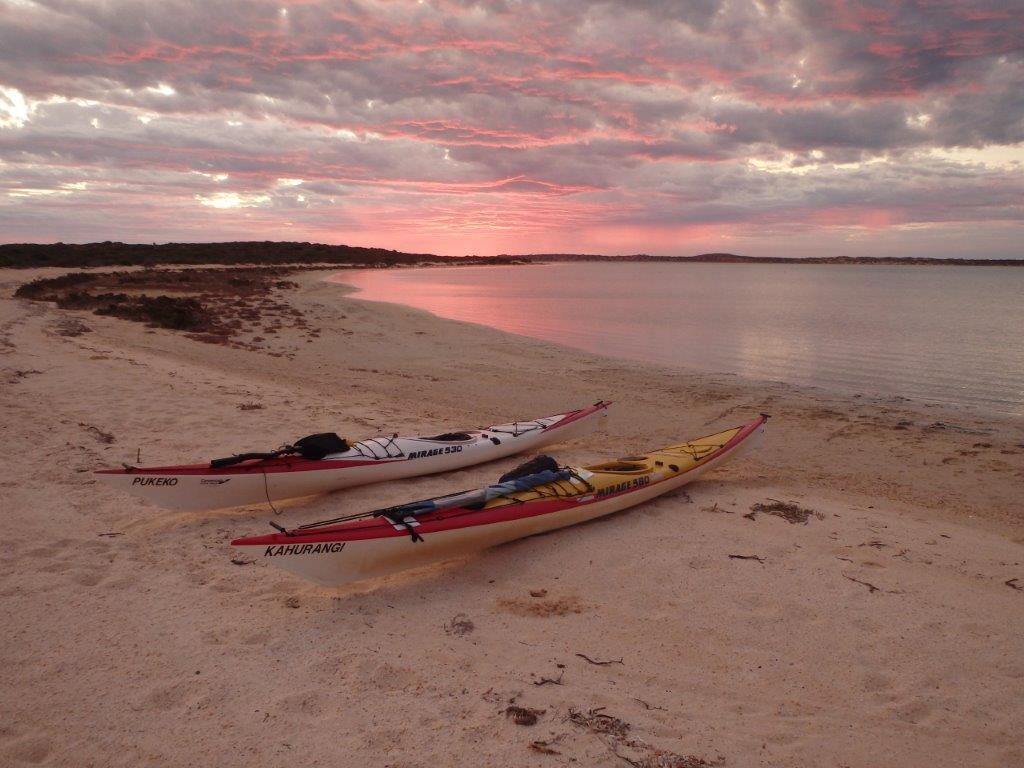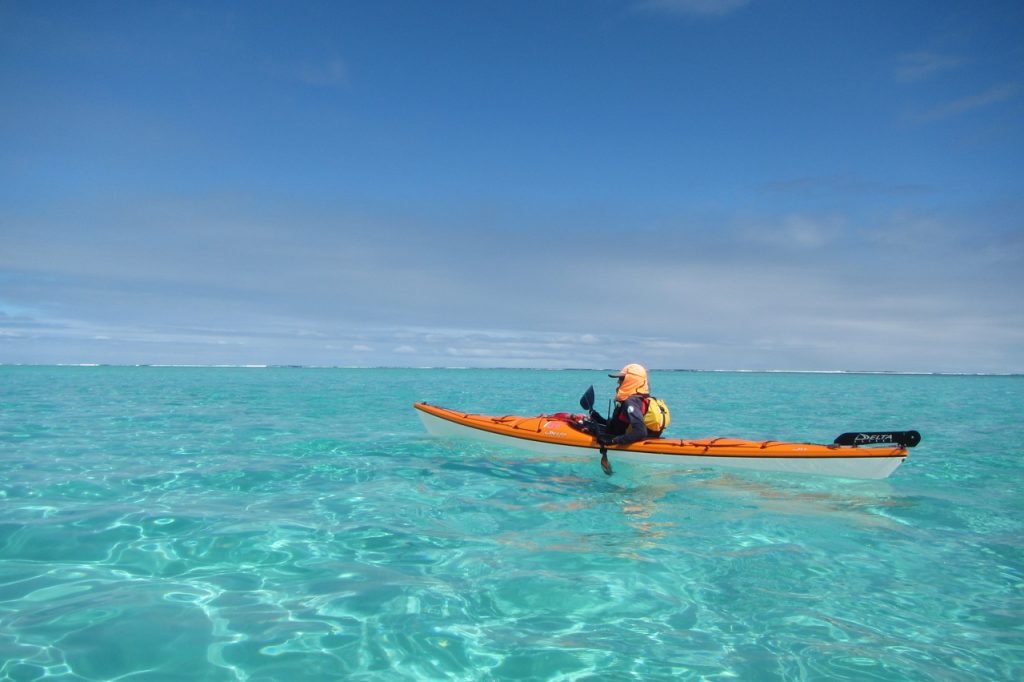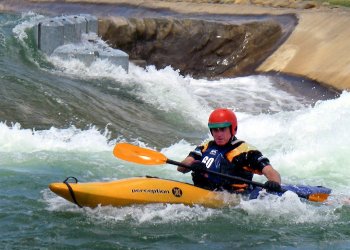|
Rod Coogan |
 |
They go to the Penrith White Water Stadium in Sydney.
What a great idea, couldn’t wait to get there! Our group members were Rod Walker, Dave Stuart and SKC members Martin Burgoyne and myself.
Day-1: Wednesday, 3 December 2008.
Getting there:
It was a very quick and bleary eyed rise at 4.00am to catch the 6.00am flight. Fortunately I was able to stay over at Martin and Val’s the night before saving me an even earlier rise from Mandurah.
Airport check-in was surprisingly effortless considering we all had our own boats and paddling gear. There were a few nervous thoughts about excess baggage fees but we got through check-in without incident.
Once landed we very quickly collected our gear, carrying our boats through the airport terminal and to the building across the road to pick up our rental car. Martin had included roof racks in his paddle bag which we fixed to the car carry bars with 100MPH tape. This presented our first challenge- couldn’t drive the car out with all four boats on top. However, after a reconnoiter and discussion we concluded the car could driven out with two kayaks on top provided we avoided low height RJS supports and steered a ‘cross country course’ through vacant parking bays to the building’s entrance. We then had to raise the entrance car height bar to get out. The remaining two boats we quickly mounted in the street just as a parking officer approached. Lucky escape! The journey to Penrith reminded me just how close and fast Sydney traffic is. I’ll not complain about Perth traffic again.
With an hour remaining before the Stadium closed we decided to get there and ‘run it’. WOW! What a first run! Absolutely fantastic, challenging and quite tricky in particular spots. It certainly whetted our appetites for the coming days’ paddling.
En-route to our bunk house accommodation we shopped for food and beverage supplies. Our accommodation was located at the rear of a B&B enterprise surrounded by an open lawned area and fruit trees. The bunk house contained eight double bunks with a small living area, TV& DVD, bathroom and a very well stocked kitchen thanks to numerous previous occupants. It looks to be a favourite with paddlers being less than three kilometres from the white water stadium.
Dinner was a delicious chicken and vegetable stir-fry prepared by Chef Rod C. and Sous Chef Martin. Unfortunately a kayak DVD playing momentarily distracted the Chef and Sous Chef that resulted in ‘sunburnt’ broccoli rosettes and soggy noodles. Fortunately the onset of fatigue, the result of a very long day, together with lashing of stir-fry sauce saved our culinary reputations. All slept soundly that night.
Day-2: Thursday,
Being there:
We rose sharply at 8.30am, enjoyed an alfresco brekky under our front verandah and packed lunch supplies for the day. This would be the pattern for the remainder of our stay.
The Penrith venue is impressive with café and catering service, usual shower and change rooms, boat shed and storage racks, beach volleyball court together with landscaped and elevated lawn viewing/ picnic areas. The water course is described as solid Grade 3 and the pumps move water at a speed that will fill a 50m Olympic size swimming pool in 55 seconds. The course rapids are basically concrete walls of varying heights that protrude into the water course. The nature of rapids and therefore degree of difficulty is altered by the addition of 30cm diameter plastic bollards to the ends of the protruding concrete walls. Some rapids have 1-2 bollard extensions, others up to 5 extensions in place. Other rapid features are created placing concrete blocks of varying shapes and height on the course bed. The sloping face of rapids appear to have submerged ‘steel like plates’ beneath them and in some cases the water flowing over them can be quite shallow.
The number of raft bookings governs water flow times. There is not sufficient revenue generated from individual paddlers to justify longer flow times. Rafting sessions today were 10.30am to noon and 2.30 to 4.00pm. Two, one and a half hour sessions seemed a little short, however we soon discovered that after two circuits of park and play kayaking a rest break is ‘sorely’ needed.
There are some very tricky and challenging features that tested our individual skills. All except Rod W. took an unscheduled swim. I would say one of our number more than the others- ahh hmm.
Some tricky features were very strong eddy currents, small waves and rapids with unexpected grip enough to capsize those not paying attention, some funny water, the ‘First Drop’ and next three rapids if you were not paddling or bracing enough to break through and ‘Knuckles’ where some of us lost skin. It is a good idea to wear gloves which we did. The concrete sides and bottom can leave you with lacerations and skin removed from knuckles and knees.
Dinner tonight was a mouth watering spaghetti bolognaise prepared by Chef Rod W. followed by a DVD viewing. The DVD was significant because it was the very first white water kayak horror movie made. The plot and dialogue was at best terrible but the paddling action was breathtaking, performed by paddlers who I’m sure had a death wish.
Day-3: Friday,
A big day:
The raft session times today were 9.00am to 3.30pm. We paddled all day until good sense dictated (read sore muscles and tired bodies) that we stop. Most every circuit I paddled today I discovered another course feature that required a measure of paddling respect.
Before dinner we cut down our paddling gear to a bare minimum to reduce the amount of wet gear to be dried before flying home tomorrow.
Dinner tonight was a role reversal from Day-1. This time Chef Martin and Sous Chef Rod C. created a very sumptuous pork and vegetable stir-fry without any sunburnt ingredients or sogginess.
Day-4: Saturday,
The last day:
Following breakfast we prepared for our last paddle and packed what we could for the return flight home. This morning the stadium was packed. Competitive Time Trials were being held with spectators, slalom kayaks, rafts, officials, competitors and rafters everywhere. After paddling one circuit we agreed it was too busy and decided to call it a day.
The weather was sunny so wet gear was laid out to dry on bollards, pavement and trees. We wanted to reduce the chance of excess weight from sodden gear. By the time we had showered and loaded the boats onto the car our gear was near dry.
The journey in weekend Sydney traffic was tedious. Again we had no problems with airline check-in. The return flight was about 4 hours and was particularly numbing.
In spite of skinned knuckles, a lacerated knee, sore muscles and gouges to my helmet this is a trip I will definitely do again.
An excellent venue and great company.
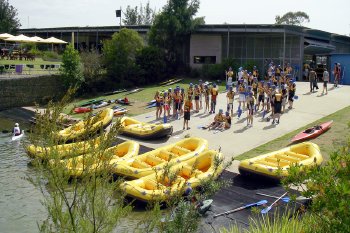
The ‘Finish Pool’ where rafters launch to the conveyor.– photo Rod Coogan
[/vc_column_text][/vc_column][vc_column width=”1/2″][vc_column_text]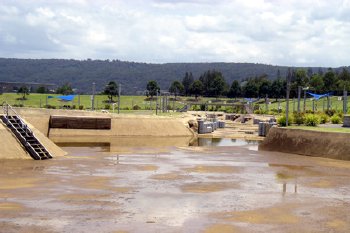
The Start Pool at low tide – photo Rod Coogan
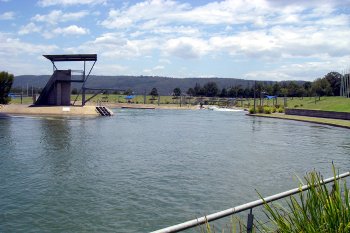
The Start Pool at full capacity – photo Rod Coogan

Conveyor exit into the ‘Start Pool’ directly above ‘First Drop’. – photo Rod Coogan
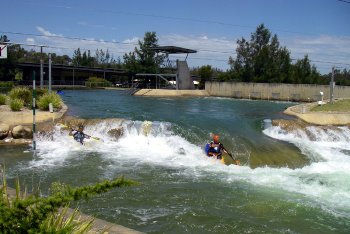
Rod W. boofs as Martin attacks ‘First Drop’. – photo Rod Coogan
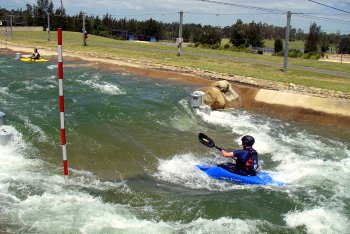
Dave surfs the rapid above ‘Main Wave’. – photo Rod Coogan

Martin surfs the rapid above ‘Main Wave’. – photo Rod Coogan
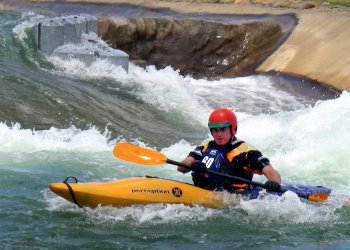
Martin breaks-out at ‘Main Wave’.– photo Rod Coogan
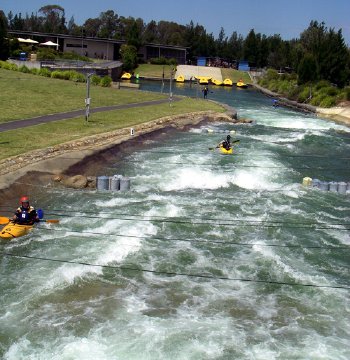
Looking toward ‘The Deep Fryer’, ‘Last Drop’ and the ‘Finish Pool’.– photo Rod Coogan
 |

